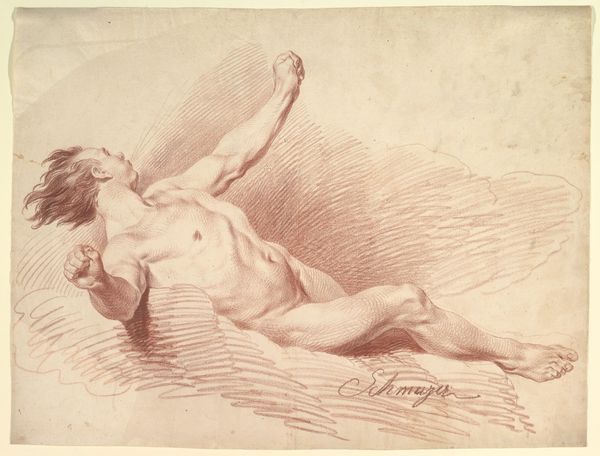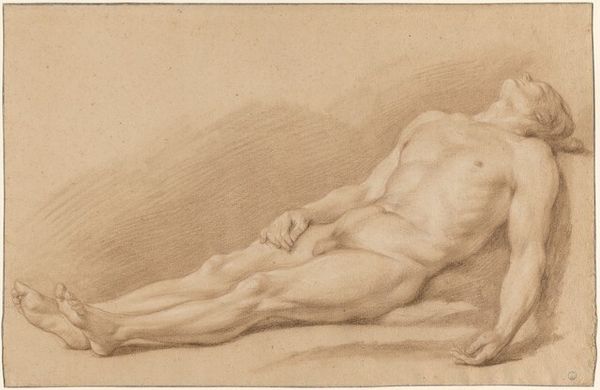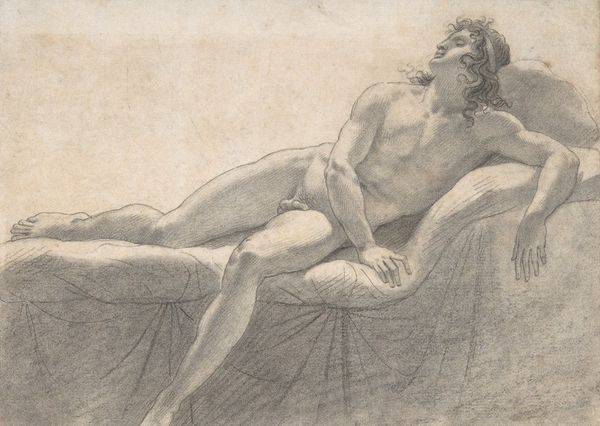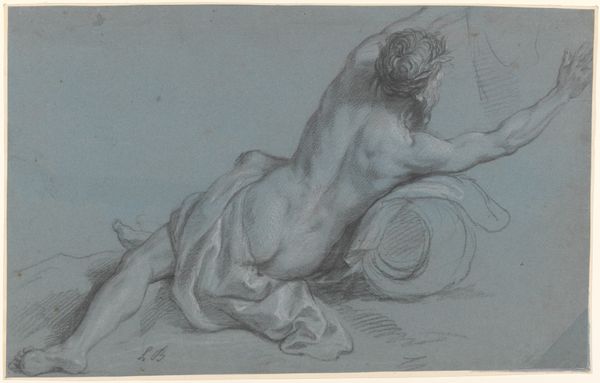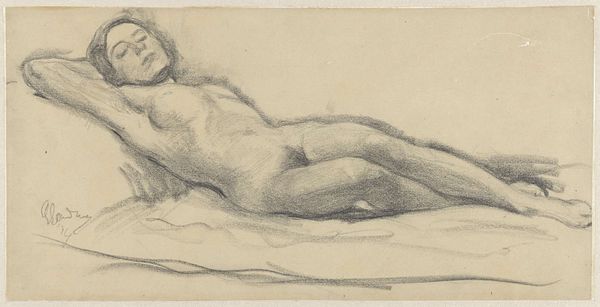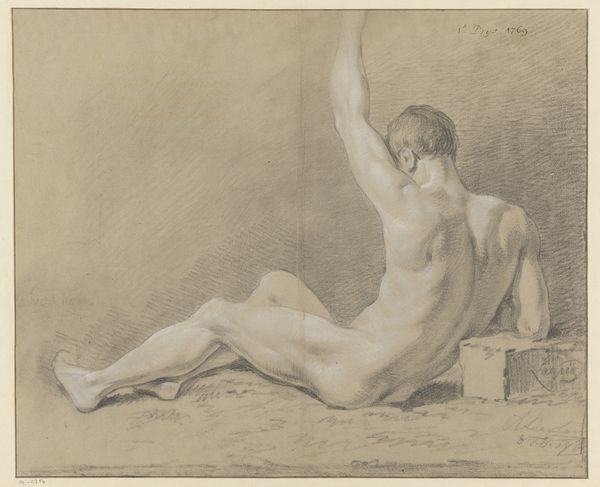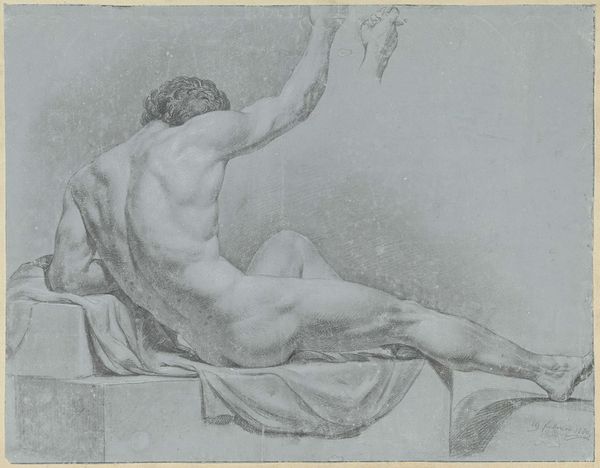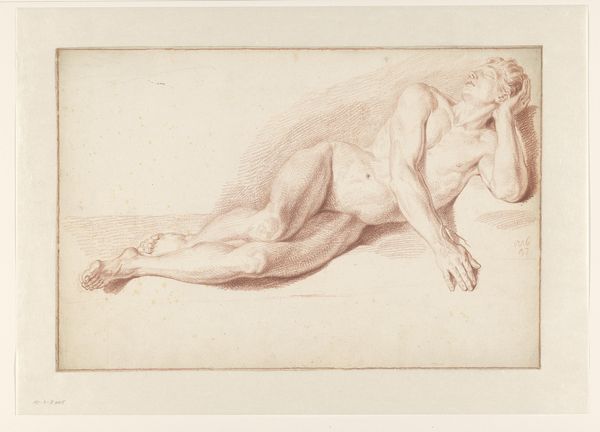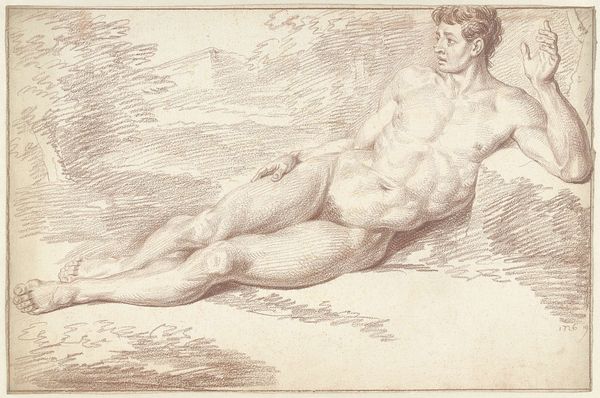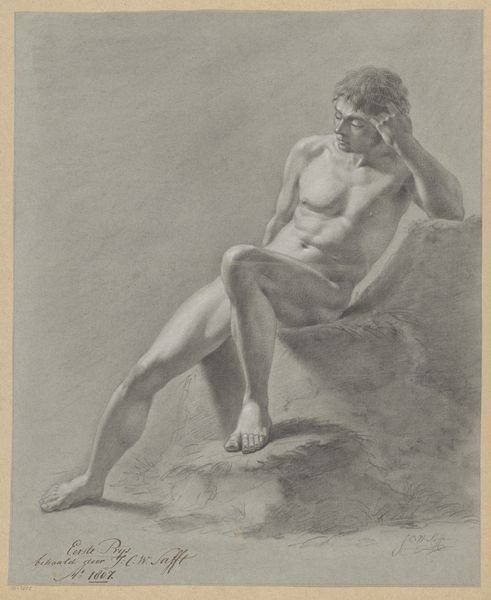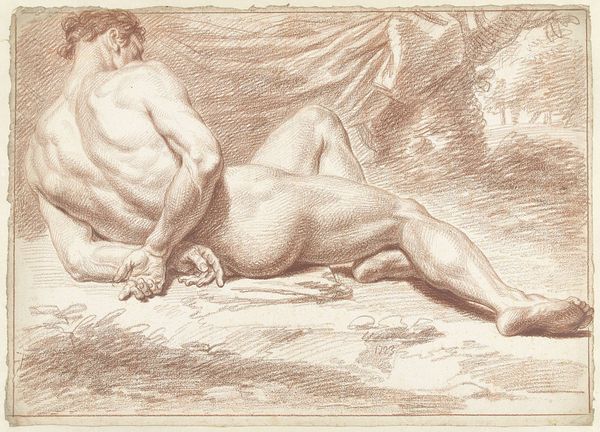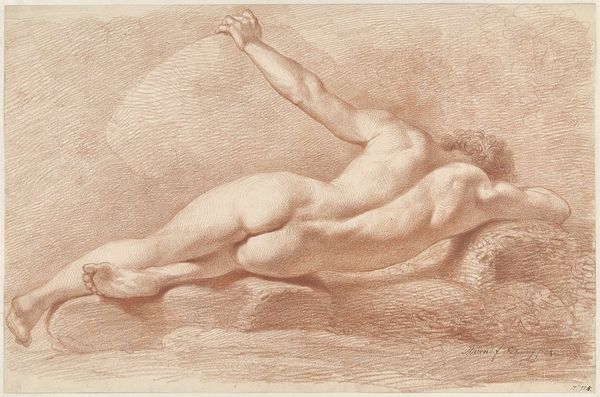
Sovende bacchantinde. Studie til eller tegning efter Bissens første legemsstore statue 1822 - 1825
0:00
0:00
drawing, pencil
#
drawing
#
neoclassicism
#
charcoal drawing
#
pencil drawing
#
pencil
#
portrait drawing
#
history-painting
#
academic-art
#
nude
#
portrait art
Dimensions: 242 mm (height) x 399 mm (width) (bladmaal)
Editor: This is a pencil and charcoal drawing called "Sleeping Bacchante. Study for or drawing after Bissen's first life-size statue" by H.W. Bissen, created between 1822 and 1825. There is something about the reclining figure that's both sensual and incredibly vulnerable. How would you interpret this work? Curator: This drawing is particularly interesting when we consider the institutional context of art production at the time. Bissen was working within a Neoclassical framework, where the nude figure was seen as a vehicle for exploring idealized forms, drawing on classical Greek sculpture for inspiration. Do you think the classical origin can contribute to the sense of vulnerability? Editor: Definitely! It's as if Bissen is inviting us to contemplate not just the individual, but also the historical tradition he's engaging with. There's a public dimension, too, as Neoclassical artists often used classical themes to subtly comment on contemporary socio-political ideals, such as civic virtue or moral character, and this Bacchante is no different. Curator: Exactly! Now, thinking about the display and reception of this artwork, consider that this drawing wasn’t initially conceived for public display as an artwork in its own right, but as a study for a statue. How does that impact our viewing experience today? Editor: That makes me think about the role of the museum itself in shaping how we understand the artwork. By displaying the sketch, the museum elevates it, giving it a new kind of authority, so, Bissen would be seen as one of the Great Masters of Danish sculpture. Curator: Precisely! The museum context transforms the drawing from a preparatory study into a valued object. Our understanding is influenced by the institution. What does it tell you about the public role of the museum then? Editor: It suggests the power the institution has, framing Bissen and Neoclassicism itself as historically relevant. I appreciate your perspectives on how both the artist and institution can affect the narrative surrounding this Bacchante!
Comments
No comments
Be the first to comment and join the conversation on the ultimate creative platform.
